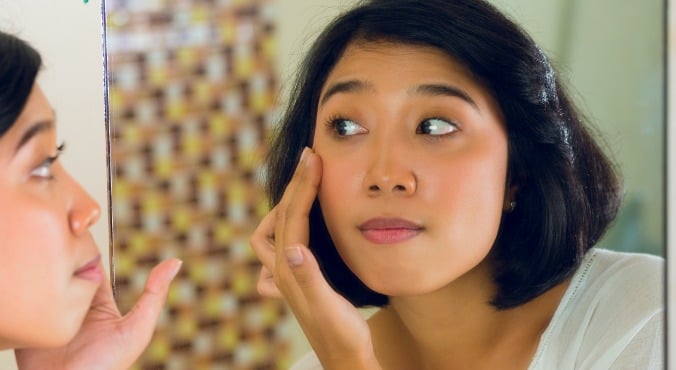
Image: iStock.
If your skin could talk, it would probably have a lot to say to you. “You forgot to wear sunscreen again?”, for instance. Or, “Seriously, lady, quit squeezing that damn pimple”.
Just because your skin can’t communicate verbally, doesn’t mean it’s not capable of letting you know when something’s wrong. Many common skin issues can signal underlying health problems — potentially serious ones — you mightn’t be aware of.
RELATED: The top 7 myths about skin. Busted.
Here are five of them.
1. Acne
Acne is an extremely common skin condition that affects 85 per cent of Australians aged between 15 and 24. Generally acne is the result of hormonal changes or a family history of the condition but certain presentations can point to other causes, explains Dr Li-Chuen Wong, a consultant dermatologist aligned with Aveeno and Newtown's Sydney Skin.
RELATED: 8 ways to deal with acne when your skin should’ve grown up by now
"A female who starts to get acne around the jaw, we call it 'muzzle acne', and breakouts particularly before having periods — and it's hard for them as well to lose weight and they have hair on the upper lip — might have polycystic ovarian syndrome (PCOS)," Dr Wong says.
"If you get acne and it's monomorphic, so all the lesions look exactly the same and they're on the upper back and chest, you have to wonder whether the patient is having annabolic steroids." (Post continues after gallery.)
